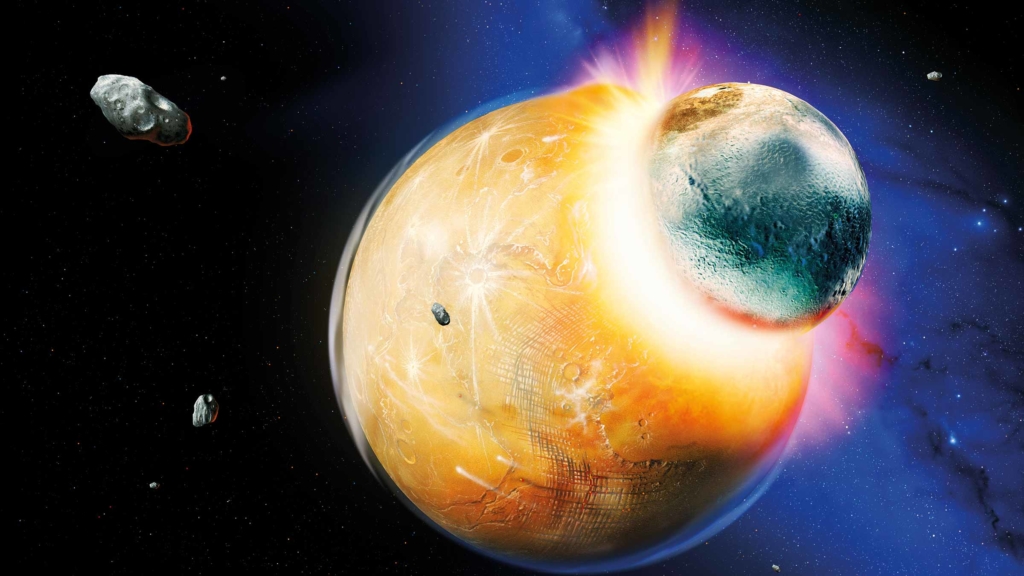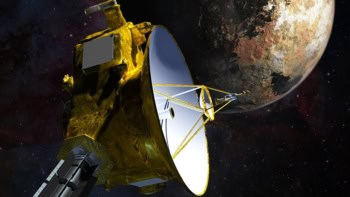Sabine Hossenfelder reviews Origins: the Scientific Story of Creation by Jim Baggott
How did this happen? You, reading this, sitting on a rock that orbits a bright ball of plasma, which itself undergoes nuclear fusion? How all this, and more, materialized is what you will learn from Jim Baggott’s book Origins: the Scientific Story of Creation – at least to the extent that scientists have the answers. To explain how we came to be, one must draw on knowledge from many different disciplines, which poses quite a challenge to any science writer.
In the beginning, of the universe and of this book, it’s all physics. So far, so simple. But to make sense of what happens next, the reader also needs to get to grips with a good deal of chemistry, biology, geology and archaeology, to name a few of the most important research areas involved in the story of creation. And not only must the writer draw on all these disciplines, they also must identify and summarize the key points without getting lost in details, before swiftly moving on to the next phase. It’s a challenge indeed, but Baggott takes it on. “I believe all my efforts as a popular science author over more than 20 years have been building up to this,” he writes in the preface.
Origins is without doubt an ambitious project, but Baggott executes it masterfully. Whether he covers well-established research or as-yet speculative ideas, he always makes sure to carefully state the scientific case and quote the evidence behind his claims. His writing style is clean and easy to follow, his metaphors and everyday examples are useful and to the point, and he has included many helpful figures and tables that serve well to illustrate his points.
Despite the topic’s breadth, this is not a shallow book. Origins is packed with illuminating accounts of the science behind creation, starting with the Big Bang and the subsequent period of rapid expansion known as inflation. It follows the cooling of the particle plasma in the early universe, the formation of atomic nuclei and atoms, the emission of the first light, the formation of large-scale structures, galaxies, solar systems, planets in general, and Earth in particular. In the later chapters, Baggott goes through the best current theory for the formation of the solar system, and summarizes the history of planet Earth and its companion, the Moon. He then lays out the currently discussed theories for the formation of self-reproducing large molecules, the first types of cells, bacteria, plants, and finally larger forms of animals. The dinosaurs come and go and, eventually, humans appear on the face of the planet. Baggott doesn’t stop with humans. In a refreshing no-nonsense style, he goes on to explore what we do and don’t understand about consciousness. He ends his book where the history of civilization would begin, some 10,000 years ago.
But Baggott’s is not only a story about our universe coming to be. It is also a story about science and scientists, a story of big questions being answered in little steps, through persistence and a great many trials, with inevitable errors. It is a story about fallible humans with hopes and beliefs, easily confused mammals who nevertheless push onward to unravel the mystery of their existence. The story of our creation is also, as Baggott makes clear, unfinished and will almost certainly have to be revised soon. “Perhaps we can be reasonably certain of one thing,” he writes, “Just 10 years from now the story will be different.” Certain key pieces of the story are also missing, notably the origin of life, but also smaller ones, such as our incomplete understanding of inflation in the early universe, or the formation of the Moon.
To be honest, I did not expect to find the book interesting. After all, I chose my speciality – theoretical physics – because that’s where my interests lie, and I get easily bored by family trees of bacteria, fungi and fern. I also vaguely remember having suffered through all of that in school, and was under the impression that once was enough. But as I learned from Baggott’s book, physics isn’t the only discipline that has progressed since my school days. Fossils I had never heard of have revealed new insights into the evolution of mankind, advanced computer simulations have made it possible to study the formation of planets, moons and solar systems in novel ways, and new theories about the origin of life have been put forward. And I didn’t suffer learning about this.
I would recommend this book to anyone who wants to know the science behind the story of our universe. That’s opposed to those who prefer inspiration over information, and who will likely find this book heavy to digest. Origins is stuffed with knowledge. There isn’t a single page in this book you can flip over and not miss something. But the best thing about Baggott’s book is that he doesn’t preach. He doesn’t tell the reader how awed they are supposed to be and doesn’t put claim to the greatest story ever told. He doesn’t have to – the story speaks for itself.
- Jim Baggott Origins: the Scientific Story of Creation Oxford University Press 432pp £25hb




